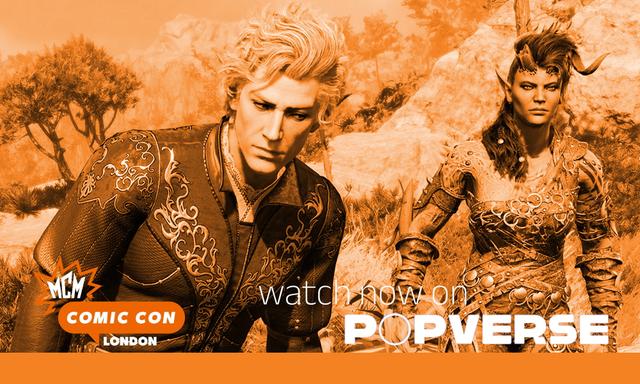If you click on a link and make a purchase we may receive a small commission. Read our editorial policy.
Death in DC: Inside DC’s new magic trick for superhero deaths
Superhero death and resurrection is a staple to the genre, with DC relying on a recurring trope to take heroes off the board

The WildStorm legacy lives on in the DC Universe, with a new WildC.A.T.s title by Matthew Rosenberg, Danny Kim, and Christian Duce, set firmly in the DCU, with the gritty heroes taking on the sinister HALO Corporation as they cross paths with familiar DC heroes and villains. Taking point against HALO’s cosmically powered mastermind, the Void, is the reckless, gun-wielding antihero Grifter who appears to kill the Void only to be caught in the middle of a resulting explosion, apparently dying in the process. In reality, Cole Cash has been transported to different worlds across the DC Multiverse, trying to survive the dangers of each universe while finding a way to return back home to the DCU.
This strange, presumed death of a DC hero only from them to be whisked away to parts unknown is an increasingly recurring trope that’s been seen throughout DC’s titles recently. A little bit Quantum Leap and a little bit Kurt Vonnegut’s Slaughterhouse-Five, the narrative device gives characters the chance to operate outside of their normal status quo as the world around them reflects on their absence. And though the trope has gotten a lot of prominent usage across the DCU, it is far from the only time major DC and Marvel titles have used this device for their most iconic characters.
Here’s how WildC.A.T.s’ uses the presumed-dead-lost-in-the-multiverse trope, other major instances of its usage in the past several years of mainline DCU stories, and the relatively concurrent deployment of the narrative device in both DC and Marvel well over a decade ago.
Grifter’s brush with an otherworldly purgatory

After the HALO Corporation unveils its corporate-backed superhero team, the Seven Soldiers of Victory, Grifter immediately becomes suspicious of their true intentions and investigates the matter for himself. Though his confrontation with Void leaves the rest of the WildC.A.T.s believing that he died, Cole regains his bearings in a Wild West town known simply as Salvation where he finds himself in a duel with notorious gunslinger Jonah Hex. Before the two can determine who’s the quicker draw, Cole is abruptly pulled away to another reality as his multiversal odyssey continues.
Cole begins to lose track of the number of worlds that he visits over the course of WildC.A.T.s #7, revealing that he spends anywhere from a few hours to a few days with each multiversal leap. By Cole’s estimation, he’s been at this tour for several weeks, making references to visiting everything from zombie-overrun universes to the Red Son Universe. The issue ends with Cole finding himself in a post-apocalyptic DCU where he links up with a motley crew of heroes led by Damian Wayne and Midnighter. However, someone else has been tracking Cole’s unique energy signature across the multiverse and Grifter’s long road home has just become a cosmic hunt.
Batman and the death-defying tour of the multiverse

Batman recently endured his own presumed death while battling the rogue artificial intelligence Failsafe in Chip Zdarsky and Jorge Jimenez’s opening story arc on Batman. Though Failsafe appears to vaporize the Dark Knight on the spot, in reality, Bruce Wayne is teleported to an alternate universe with many of the familiar faces across Gotham City drastically reimagined in different roles. The resulting storyline, 'The Bat-Man of Gotham,' by Zdarsky and Mike Hawthorne, has Bruce confront this world’s version of the Joker, the Red Mask, while scrambling to find a way back to the DCU.
The story climaxes with Batman accessing an experimental portal through the multiverse as he pursues the Red Mask and prevents him from spreading his corrosive influence throughout multiple realities. This leads to a parade of iconic depictions of the Caped Crusader across his entire multimedia history, in a full-on celebration of the character and his extensive legacy. By the end, it’s Tim Drake who steps up and brings Batman back home, underscoring Robin as an integral part of the Batman mythos as the Dark Knight is rescued by the Boy Wonder.
Exile of the superheroes

Batman is no stranger to being assumed by the rest of the superhero community to be dead, with not even a year before “The Bat-Man of Gotham” having been declared dead along with the rest of the Justice League in the 2022 crossover event Dark Crisis on Infinite Earths by Joshua Williamson and Daniel Sampere. When confronting the omnipotent supervillain Pariah and his corrupted Dark Army on the other side of the cosmos, the majority of the Justice League are imprisoned in their own individual pocket universes where Pariah feeds off the worlds’ raw multiversal energy. Black Adam, the sole escapee from the disastrous battle, returns to Earth to inform the rest of the heroes, with Dark Crisis opening with a vigil for the Justice League before the truth about their defeat eventually comes to light.
Wonder Woman similarly faced her own extended stint being missing in multiversal action following the 2020 crossover event Dark Nights: Death Metal by Scott Snyder and Greg Capullo. Gaining her own degree of cosmic omnipotence to defeat the Batman Who Laughs and restore the multiverse to normal, Diana Prince falls between the cracks of reality as her power set returns to normal, winding up a Norse pantheon-themed dimension. After much difficulty, Diana eventually returns to the DCU, bringing along some of her newfound friends with her.
Unstuck in time

Even beyond recent DC initiatives and epic storylines, the declared-dead-lost-in-time/space mechanic is certainly not one new to comics, including DC Comics. Grant Morrison, J.G. Jones, Carlos Pachecho, and Doug Mahnke appeared to kill off Batman in their 2008 crossover event Final Crisis only to reveal that Darkseid’s Omega Beams sent the Dark Knight hurtling through time as the villainous New God’s secret weapon against the heroes.
In the Marvel Universe, Ed Brubaker and Steve Epting famously killed off Captain America during their own acclaimed run on the Star-Spangled Avenger’s solo title, only for the assassin to use bullets that teleported Steve Rogers to different points in his own history. To make the Vonnegut connection all the more palatable, Brubaker goes as far as to paraphrase Slaughterhouse-Five in explaining what happened to Steve in his 2009 miniseries Captain America: Reborn, with Bryan Hitch.
Superhero comics have played around with the notion of death and keeping readers on their toes virtually since the dawn of the genre to get readers to check out the follow-up to countless death-defying cliffhangers. By simply exiling heroes to alternate realities and timelines, this saves the creative teams from concocting increasingly contrived means of resurrection to bring them back while exploring what makes these characters tick juxtaposed against these stranger backdrops. It is somewhat amusing that the trope has gotten a more and more prominent usage lately; it hasn’t overstayed its welcome just yet but the repetition is becoming more noticeable. And if these past trends are any indicator, Grifter is going to eventually come home just fine, if somewhat shaken by his experiences as the latest hero to traverse the multiverse while being presumed dead.
WildC.A.T.s #7 is written by Matthew Rosenberg, illustrated by Danny Kim and Christian Duce, colored by Elmer Santos and Tony Avina, and lettered by Ferran Delgado. Grifter’s story continues in WildC.A.T.s #8, on sale June 20 from DC Comics.
Follow Popverse for upcoming event coverage and news
Find out how we conduct our review by reading our review policy
Let Popverse be your tour guide through the wilderness of pop culture
Sign in and let us help you find your new favorite thing.
















Comments
Want to join the discussion? Please activate your account first.
Visit Reedpop ID if you need to resend the confirmation email.